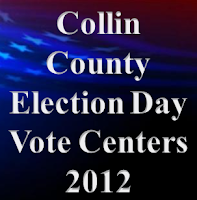In a speech in Boston, Holder became the highest-ranking official to call for voting changes since President Barack Obama expressed exasperation with the hours-long lines during his re-election victory speech last night.
“Modern technology provides ways to address many of the problems that impede the efficient administration of elections,” Holder said.Registering to vote is a necessary step to be eligible to cast a ballot in almost every U.S. state, and some jurisdictions require the paperwork weeks before Election Day. The United States has a patchwork election system, relying on local officials in 3,141 counties across the 50 states and the District of Columbia to the define laws and manage the bureaucratic process used to register voters. This does not include U.S. Commonwealths and territories with what are generally county equivalents.
Holder said the current system was needlessly complex and riddled with mistakes, resulting in 60 million adult U.S. citizens not being eligible to cast a ballot in the 2008 presidential election because they had not filed the right paperwork.
In Texas, voters must be registered to vote 30 days before election day, and re-register when they move. All the registration paperwork is handled at both the county and state levels, and sometimes across Texas' Secretary of State and Department of Motor Vehicles (DPS) state agencies.
Because of the Broken (DPS) Texas Motor Voter Registration Process many people who thought they re-registered when they change their driver's license after moving from one Texas county to another found they were not properly re-registered by their visit to the DPS office or website. These voters thought they had filed the right voter registration paperwork, but one of the state agencies seemingly mishandled or lost it. These harried voters were forced to travel to their county's main election office to vote a limited ballot during early voting or vote a provisional ballot at their polling location on election day, and many of those provisional ballots were likely not accepted for counting.
The safeguards are in place to prevent a problem that rarely, if ever occurs, largely because few people are willing to risk felony charges to influence an election, Holder said.
“You can’t get groups of sufficient numbers of people that are willing to face that possibility and try to influence an election, which is why in-person voter fraud simply doesn’t exist to the extent that some on the right have said that it does,” Holder told a crowd of several hundred at the John F. Kennedy Presidential Library in Boston.
By coordinating existing databases, the government could register “every eligible voter in America” and ensure that registration does not lapse after moving to a new home, Holder said.
Holder, also recommended that polling places should have an adequate number of voting machines and be open for additional days — a challenge because thousands of local officials make those decisions independently. Holder also suggested that Election Day should be moved to a weekend.
“We should rethink this whole notion that voting only occurs on Tuesday, which is an agricultural notion from way back,” Holder said. “Why not have voting on weekends?”
An overhaul would likely require approval from Congress, a significant obstacle because of the view by many Republicans that easing registration requirements could increase voter fraud. The U.S. Senate Judiciary Committee is scheduled to hold a hearing on “the state of the right to vote” on Dec. 19.
Full text of Holder’s remarks.
























